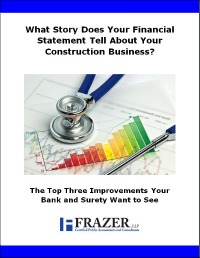Hi There,
Some construction companies buy and maintain large fleets of equipment. Others choose to lease these assets and, in some cases, purchase select pieces at the end of the arrangement. Still others opt to rent what they need, for only as long as they need it.
Making the best choice among these alternatives can be overwhelming. Every contractor wants to have a large, diverse fleet of equipment ready to deploy at a moment’s notice. But few, if any, want to deal with the potential financial repercussions.
Buying: For daily use
It usually makes sense to buy equipment that you expect to use regularly, such as daily or almost daily. If you’re using an asset at or near its full capacity — even when your workload fluctuates — generally buying and maintaining it will pay off.
For starters, you’ll have the piece ready to go at a moment’s notice and, assuming proper maintenance, be able to extract maximum life-cycle value from it. Ownership also allows you to, where permissible, claim tax deductions for related depreciation, insurance, interest and repair expenses.
On the other hand, coming up with large down payments can be a financial strain. In addition, investing heavily in equipment ties up capital that you might better use in other ways. Consider, too:
- What space you need to store purchased equipment?,
- How will you transport the asset to and from jobsites?, and
- What resources, financial and otherwise, you’d need to use in repairing and maintaining the piece?: such as having a shop and personnel on site or transporting equipment to service centers.
- What impact will this have on the company’s balance sheet and its financial covenants?: adding a long-term asset and current and long-term debt on the books.
As alluded to above, life cycle is everything. Many of today’s construction assets are evolving just as rapidly as the technology used to track and run it. So look carefully into whether you’ll be able to fully use a piece of equipment before it’s outmoded.
Leasing: Hedging your bets
Leasing equipment offers some of the benefits of ownership while mitigating certain downsides. An equipment lease is essentially a loan arrangement in which the lender owns the equipment and leases it to a contractor at a flat monthly rate for a specified term.
At the end of that term, the lessee can opt to buy the equipment, return it or lease new assets. Just as some drivers prefer to lease vehicles to stay up to date and reduce their maintenance costs, many contractors see the same advantages in leasing equipment.
With leased assets, you can avoid making large down payments and allocate capital for other purposes. You’ll typically pay a higher interest rate, though, than you would for a bank loan to buy equipment outright. Furthermore, it is often difficult to determine the actual interest rate being imputed into the lease, increasing the possibility of overpayment.
Leases are usually set up so that payments are made and deducted as an operating expense rather than as a payment of debt. But if a lease includes certain options (such as a bargain lease option) it may be defined as a capital lease and, therefore, requiring the asset and debt to be put on the books.
However, pending changes in accounting rules proposed by the Financial Accounting Standards Board and the International Accounting Standards Board are expected to go into effect in the next several years and will likely affect the way leases are handled on those books. These changes will affect financial statements of companies following Generally Accepted Accounting Principles (GAAP).
Currently, as long as an agreement doesn’t meet the criteria of a capital lease, equipment lease payments are considered operating expenses and don’t appear on balance sheets. The new standard would require businesses to list leased equipment as assets and lease payments as liabilities on their books. Including long-term lease commitments as liabilities can potentially reduce a company’s working capital and negatively affect its debt-to-equity ratio, thus potentially affecting its bonding capacity.
Renting: The flexible option
Renting offers the most flexibility, allowing you to pay for only the equipment you need for a limited period. This option often benefits smaller companies — especially subcontractors — that don’t have the resources to maintain a fleet of equipment. Of course, that doesn’t mean renting can’t benefit larger construction businesses under the right circumstances.
Choosing to rent a piece of equipment means no big down payment, as with a purchase, and less money spent on the overall arrangement than with a lease. Plus, rental payments are generally considered a tax-deductible operating expense, which simplifies accounting.
Renting also frees you from responsibility for maintenance and repairs. And because most rental companies regularly update their inventories, you’ll generally have access to newer assets.
Naturally, there are downsides. You’ll be at the mercy of rental inventories when looking to procure that “must-have” piece of equipment. And, in some cases, renting could increase your overall expenses (compared with leasing and owning), because rental companies often build higher costs into their payment terms since you are paying for their idle time and profit.
The right mix
As mentioned, large construction companies may be able to own their own fleets. But, for small to midsize businesses, some combination of owned, leased and rented equipment will likely make the most sense. We welcome the opportunity to help you find the right mix for your situation and whether the changes to lease accounting standards may affect your construction business. Click the button below for a complimentary consultation.

Sincerely,

Brian Tunnelle, CPA, CCIFP, CGMA, MBA
Partner
LinkedIn: www.linkedin.com/in/briantunnelle
Twitter: @FrazerLLP
Brian Tunnelle has more than two decades of experience in auditing, accounting and consulting for a wide range of companies with particular expertise in the construction industry. Brian’s areas of expertise include financial statement engagements, transaction financial due diligence, agreed upon procedures, employee benefit plan audits and general business consulting. Contact Brian at btunnelle@frazerllp.com or 714.671.2214.
Frazer LLP has far-ranging experience in the specialized accounting methods for the construction and engineering industries. From tax and accounting compliance and consulting on purchase and sale of real estate, negotiating and tax free exchanges to cost segregation and business valuation, our team can provide you with expert tax, financial, and management advice in any stage of your construction business.




